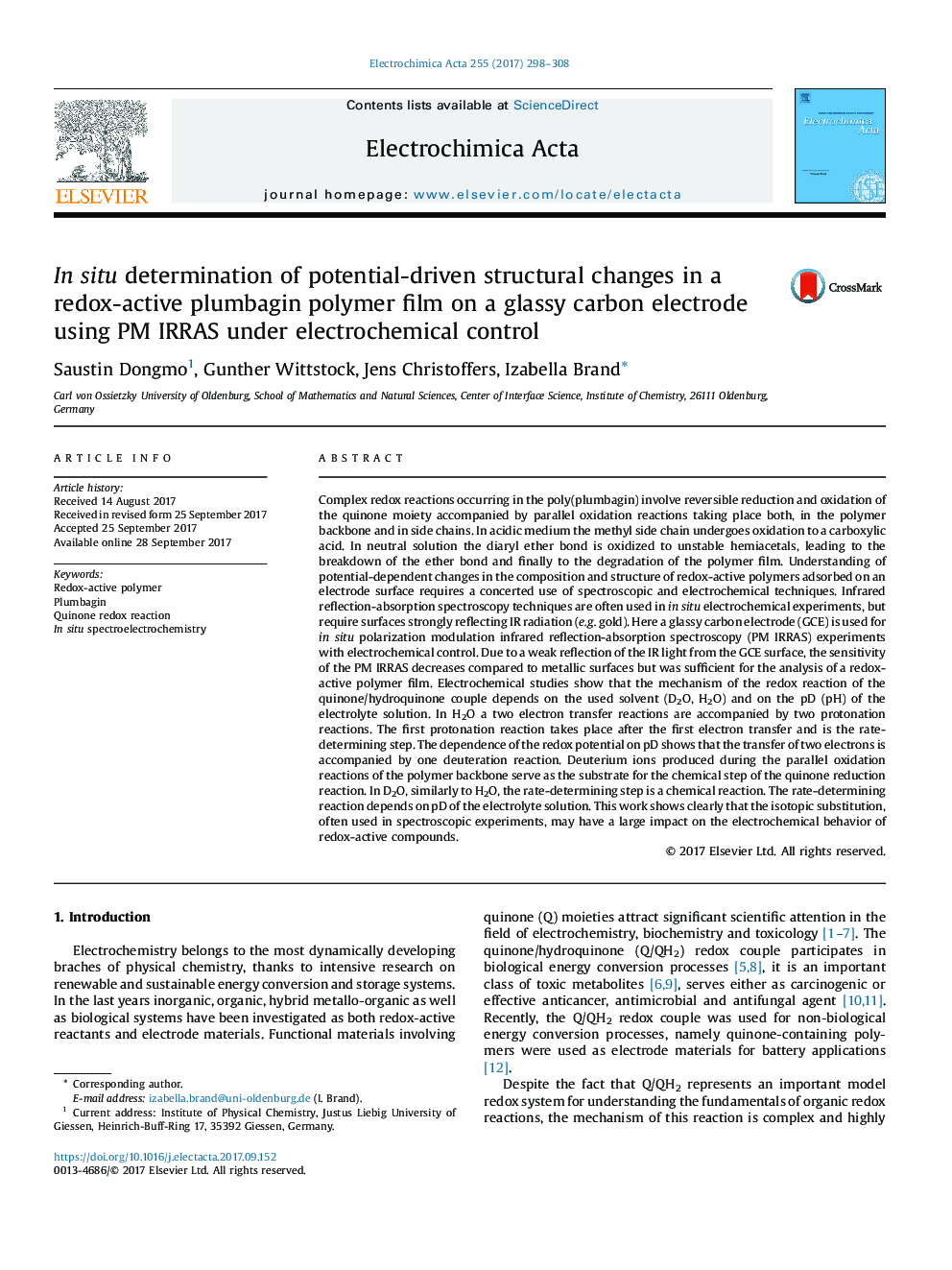| کد مقاله | کد نشریه | سال انتشار | مقاله انگلیسی | نسخه تمام متن |
|---|---|---|---|---|
| 4766684 | 1424102 | 2017 | 11 صفحه PDF | دانلود رایگان |

- Redox-active plumbagin polymer was electrodeposited on a glassy carbon surface.
- The mechanism of quinone/hydroquinone redox reaction depends of the pH (pD).
- Hydroquinone oxidation reaction is accompanied by parallel oxidation reactions.
- In situ spectroelectrochemistry is used to determine structural changes in polymer.
- Isotopic effects play important role in mechanisms of complex redox reactions
Complex redox reactions occurring in the poly(plumbagin) involve reversible reduction and oxidation of the quinone moiety accompanied by parallel oxidation reactions taking place both, in the polymer backbone and in side chains. In acidic medium the methyl side chain undergoes oxidation to a carboxylic acid. In neutral solution the diaryl ether bond is oxidized to unstable hemiacetals, leading to the breakdown of the ether bond and finally to the degradation of the polymer film. Understanding of potential-dependent changes in the composition and structure of redox-active polymers adsorbed on an electrode surface requires a concerted use of spectroscopic and electrochemical techniques. Infrared reflection-absorption spectroscopy techniques are often used in in situ electrochemical experiments, but require surfaces strongly reflecting IR radiation (e.g. gold). Here a glassy carbon electrode (GCE) is used for in situ polarization modulation infrared reflection-absorption spectroscopy (PM IRRAS) experiments with electrochemical control. Due to a weak reflection of the IR light from the GCE surface, the sensitivity of the PM IRRAS decreases compared to metallic surfaces but was sufficient for the analysis of a redox-active polymer film. Electrochemical studies show that the mechanism of the redox reaction of the quinone/hydroquinone couple depends on the used solvent (D2O, H2O) and on the pD (pH) of the electrolyte solution. In H2O a two electron transfer reactions are accompanied by two protonation reactions. The first protonation reaction takes place after the first electron transfer and is the rate-determining step. The dependence of the redox potential on pD shows that the transfer of two electrons is accompanied by one deuteration reaction. Deuterium ions produced during the parallel oxidation reactions of the polymer backbone serve as the substrate for the chemical step of the quinone reduction reaction. In D2O, similarly to H2O, the rate-determining step is a chemical reaction. The rate-determining reaction depends on pD of the electrolyte solution. This work shows clearly that the isotopic substitution, often used in spectroscopic experiments, may have a large impact on the electrochemical behavior of redox-active compounds.
103
Journal: Electrochimica Acta - Volume 255, 20 November 2017, Pages 298-308